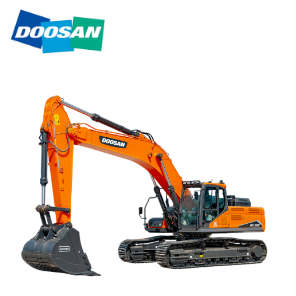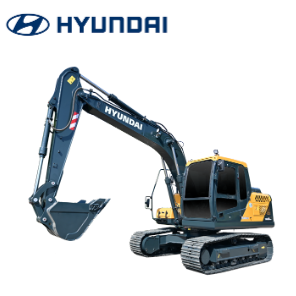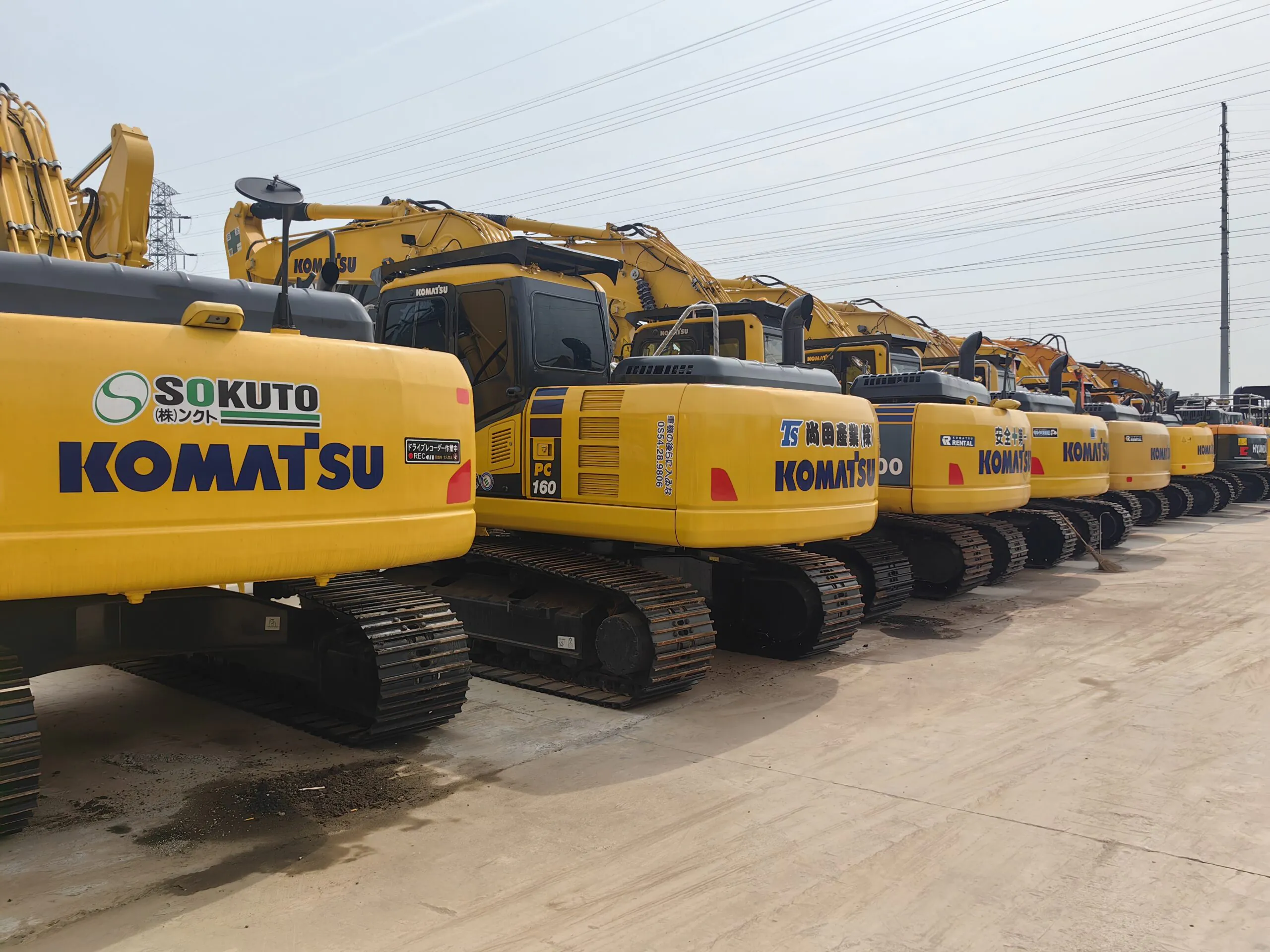In the vast and dynamic realm of the construction industry, used excavators stand as indispensable workhorses. These mechanical giants, with their robust frames and powerful hydraulics, have been the cornerstone of countless construction, mining, and infrastructure projects around the world. Their ability to dig, lift, and move large volumes of earth and materials efficiently has made them an essential asset on any worksite. The significance of used excavators in the construction sector cannot be overstated. For small and medium – sized construction companies with budget constraints, used excavators offer a cost – effective alternative to brand – new equipment. These pre – owned machines, often still in excellent working condition, can perform the same tasks as their new counterparts at a fraction of the price. This affordability allows construction firms to expand their equipment fleets, take on more projects, and enhance their productivity without breaking the bank. Moreover, the used excavator market also plays a crucial role in promoting sustainable practices within the industry. By reusing and recycling these machines, we reduce the demand for new manufacturing, which in turn conserves valuable resources and minimizes the environmental impact associated with the production of heavy machinery. However, the global circulation of used excavators hinges critically on the availability of efficient and reliable transportation modes. Transporting a used excavator is no simple feat. These machines are large, heavy, and often complex in structure. They require specialized handling and transportation methods to ensure that they reach their destination safely and in good working order. The choice of transport mode can significantly impact the cost, time, and safety of the shipment. For example, an inappropriate transport method could lead to damage to the excavator during transit, resulting in costly repairs and delays. On the other hand, a well – chosen transport mode can streamline the shipping process, reduce costs, and ensure that the used excavator is delivered to the customer in a timely manner. This article delves deep into the available modes of transport for used excavators. It will explore the advantages and disadvantages of each mode, the specific considerations for using them, and real – world examples to illustrate their applications. By the end of this article, readers will have a comprehensive understanding of how to choose the most suitable transport mode for their used excavator shipments, whether it’s for domestic or international transactions. Container Transport Suitability and Conditions Container transport is a popular option for shipping used excavators, but it has specific suitability criteria. Generally, small – sized used excavators are the most suitable candidates for container transport. These compact machines typically have dimensions that can be more easily accommodated within the standard confines of a shipping container. For instance, mini – excavators with a relatively small footprint and lower overall height can often be loaded into a container without significant modifications. However, for larger excavators, they usually need to be disassembled into smaller components to fit. This involves carefully removing parts such as the boom, bucket, and sometimes even the tracks. Disassembling the excavator not only reduces its overall size but also makes it easier to handle during the loading and unloading processes. Each component must be carefully labeled and documented during disassembly to ensure a smooth reassembly at the destination. Additionally, the condition of the excavator matters. If the used excavator has been well – maintained and is in a relatively clean state, it is more suitable for container transport as it reduces the risk of dirt and debris causing issues during transit. Loading and Unloading Process The loading process of a used excavator into a container is a meticulous operation that requires the use of specialized equipment. First and foremost, a suitable container must be selected based on the size of the excavator components. Standard 20 – foot and 40 – foot containers are commonly used, with the 40 – foot container offering more space for larger excavator parts. For small, intact excavators, a forklift or a small crane may be used to lift the machine into the container. The operator must ensure that the excavator is centered correctly within the container to prevent any shifting during transit. When dealing with disassembled parts, they are typically loaded one by one. Heavier parts like the engine and the main body are loaded first, and then the smaller components such as hydraulic hoses and control panels are carefully placed around them. To secure the excavator inside the container, various methods are employed. Straps and tie – downs are used to hold the parts in place. For example, heavy – duty ratchet straps are often wrapped around the excavator’s frame and attached to the container’s internal tie – down points. Wooden blocks or pallets can also be used to create a stable base for the excavator and to prevent it from moving. At the destination, the unloading process is the reverse of loading. A crane or a forklift is used to carefully remove the excavator or its parts from the container. The parts are then transported to the assembly area, where the excavator is reassembled following the disassembly documentation. Mechanics use wrenches, hoists, and other hand tools to reconnect the components, ensuring that all bolts are tightened to the appropriate torque specifications and all hydraulic hoses are properly connected and leak – tested. Advantages One of the primary advantages of container transport for used excavators is the high level of protection it offers. Containers are made of durable steel or composite materials, providing a robust barrier against external elements such as rain, dust, and sunlight. This protection significantly reduces the risk of corrosion and mechanical damage during the long – distance journey. For example, in a multi – week sea voyage, the container keeps the excavator dry, preventing rust formation on critical metal parts like the engine block and hydraulic cylinders. Container transport also offers excellent tracking and management capabilities. Most shipping lines and freight forwarders use advanced tracking systems that allow shippers and receivers to monitor the location of the container in real – time. This transparency enables better planning and coordination, ensuring that the used excavator arrives at the destination on schedule. Additionally, containers can be easily transferred between different modes of transport, such as from a ship to a train or a truck, without the need for extensive re – handling of the excavator. This multimodal compatibility streamlines the overall shipping process and reduces the potential for damage during transshipment. Disadvantages Despite its benefits, container transport for used excavators has some notable limitations. The most significant constraint is the strict size and weight limitations of containers. If an excavator is too large or heavy, even after disassembly, it may not fit within a standard container. This could lead to the need for a specialized, non – standard container, which can be extremely expensive and difficult to source. The additional work of disassembling and reassembling the excavator adds both time and cost to the shipping process. Disassembly requires skilled labor and specialized tools, and there is always a risk that parts may be damaged or lost during this process. Moreover, reassembly at the destination may require the services of a trained mechanic, which can be an extra expense. In some cases, if the reassembly is not done correctly, it can lead to operational issues with the excavator once it is put back into use. Flat Rack Transport Features of Flat Rack Flat racks are a specialized type of shipping equipment with distinct structural features that make them well – suited for transporting oversized and heavy – weight cargo, such as used excavators. These racks are essentially open – sided and open – topped platforms, typically constructed from a sturdy metal framework. The absence of side panels and a roof provides unobstructed access to the cargo area, which is a significant advantage when dealing with large – scale items. For instance, the frame is usually made of high – strength steel beams that are welded together to form a rectangular or square – shaped base with vertical supports at the corners. This robust construction allows flat racks to bear heavy loads. The open – side design enables easy loading and unloading of cargo from the sides, using cranes, forklifts, or other heavy – duty handling equipment. In addition, some flat racks may have additional features like built – in tie – down points along the edges of the platform. These points are designed to securely fasten the cargo using ropes, chains, or straps, ensuring that the load remains stable during transit. Application for Used Excavators Flat racks are particularly useful for transporting used excavators in several scenarios. When dealing with large – sized used excavators, which are too big to fit inside a standard shipping container even after disassembly, flat racks offer a practical solution. These excavators often have a large overall footprint, high height, and substantial weight, making containerization impossible. For example, large mining – grade excavators with extended booms and massive counterweights are better suited for flat rack transport. Moreover, if the used excavator has a special structure or attachments that cannot be easily removed or disassembled, flat racks become the preferred choice. Some excavators may be equipped with custom – made buckets, specialized hydraulic systems, or other non – standard components that would be damaged or difficult to separate for container – based shipping. In such cases, flat racks can accommodate the excavator in its entirety, safeguarding the integrity of these unique features. Securing the Excavator Securing a used excavator on a flat rack is a critical step to prevent any movement or damage during transportation. A variety of methods and devices are employed to ensure the stability of the excavator. Heavy – duty steel chains are commonly used to tie down the excavator. These chains are wrapped around the main structural components of the excavator, such as the chassis, the base of the boom, and the tracks. They are then fastened to the tie – down points on the flat rack using high – strength shackles or tensioning devices. For example, the chains can be threaded through the holes in the excavator’s frame and tightened to a specific tension to hold the machine firmly in place. In addition to chains, heavy – duty nylon straps with ratchet mechanisms can also be used. These straps are lightweight yet strong enough to secure the excavator. They are often preferred in situations where the use of metal chains may cause scratches or damage to the excavator’s paint or surface. Wooden or rubber blocks are placed under the excavator’s tracks and other contact points with the flat rack. These blocks act as cushions, providing additional stability and preventing the excavator from shifting due to vibrations during transit. They also help to distribute the weight of the excavator evenly across the flat rack, reducing the risk of overloading any particular area of the platform. Cost Considerations The cost of flat rack transport for used excavators is composed of several elements. First and foremost, there is the cost of renting the flat rack itself. The rental fee can vary depending on the size of the flat rack, the duration of the rental, and the location of the shipping origin and destination. Larger flat racks, which are required for bigger excavators, generally come with a higher rental cost. For example, a 40 – foot flat rack may cost significantly more to rent than a 20 – foot one. There are the costs associated with the materials used to secure the excavator. As mentioned earlier, steel chains, nylon straps, and wooden blocks all contribute to the overall expense. High – quality securing materials, which are essential for the safe transport of the excavator, can add a substantial amount to the cost. Additionally, the cost of loading and unloading the excavator onto the flat rack must be considered. This often involves the use of heavy – duty lifting equipment and skilled labor, both of which incur costs. When compared to container transport, flat rack transport can be more expensive in some cases. Container transport, especially for smaller excavators that can fit inside standard containers, may have lower overall costs due to the standardized nature of container shipping. However, for large or non – standard excavators, flat rack transport may be the only viable option, and the cost becomes a necessary investment to ensure the safe delivery of the equipment. Bulk Transport Definition and Characteristics of Bulk Transport Bulk transport, in the context of the shipping industry, refers to the transportation of goods in large quantities that are not packaged into individual units but are loaded directly into the hold of a ship, a truck, or a train. This mode of transport is characterized by its large – scale capacity. For example, bulk carriers, which are commonly used for ocean – going bulk transport, can have a deadweight tonnage (DWT) ranging from a few thousand tons to over 400,000 tons. This allows them to carry a vast amount of cargo in a single voyage, making it an extremely cost – effective option for transporting large volumes of goods. Another key characteristic is the relatively low cost per unit of cargo transported. Since there is no need for individual packaging, the costs associated with packaging materials, labor for packaging, and the handling of packaged goods are eliminated. This significantly reduces the overall transportation cost. However, due to the lack of individual packaging, the goods are more exposed during transit. As a result, bulk transport generally has lower requirements for the packaging and protection of the goods, which means that the goods are more vulnerable to external factors such as moisture, dust, and physical impacts. Feasibility for Used Excavators Bulk transport can be a feasible option for used excavators under certain circumstances. One such situation is when there is a large – scale shipment of used excavators. For instance, if a construction equipment dealer is exporting a large batch of used excavators, say 20 or more, to a particular destination, bulk transport can be an efficient choice. By consolidating these excavators onto a single large – capacity transport vessel or vehicle, the dealer can take advantage of the economies of scale offered by bulk transport, reducing the per – unit transportation cost. The feasibility of bulk transport for used excavators also depends on the availability of suitable handling facilities at the origin and destination. The loading and unloading ports or terminals must have the necessary equipment, such as large – capacity cranes and proper storage areas, to handle the heavy and bulky excavators. For example, a port with a large – capacity gantry crane that can lift several tons at a time would be well – equipped to handle the loading and unloading of used excavators in a bulk shipment. If the destination is a land – locked area, the presence of a railway station or a trucking depot with appropriate heavy – equipment handling capabilities is crucial. Handling and Loading in Bulk Transport The handling and loading process of used excavators in bulk transport is a complex operation that requires specialized equipment and skilled personnel. At the loading point, typically a port or a large – scale logistics yard, a heavy – duty crane is the primary equipment used. Mobile harbor cranes or gantry cranes are commonly employed due to their high lifting capacity. These cranes can have a lifting capacity of up to hundreds of tons, enabling them to lift the used excavators with ease. The loading process begins with the positioning of the crane over the excavator. The crane operator then carefully lowers the lifting hooks or slings onto the excavator. Specialized lifting attachments, such as spreader bars and heavy – duty chains, are used to secure the excavator to the crane. Once the excavator is firmly attached, the crane operator slowly lifts the excavator off the ground and maneuvers it towards the transport vessel or vehicle. During this process, the operator must be vigilant to ensure that the excavator does not collide with any surrounding structures or equipment. If the transport is by sea, the excavator is carefully lowered into the hold of the bulk carrier. In the hold, the excavators are usually arranged in an orderly manner to maximize the use of space. Wooden blocks or rubber mats may be placed under the excavators to prevent damage to the hull of the ship and to provide some stability. The excavators are then secured in place using chains, ropes, or other fastening devices to prevent them from shifting during the voyage. Risks and Precautions Bulk transport of used excavators is not without risks. One of the main risks is the potential for damage due to collisions. Since the excavators are not individually packaged and are often closely packed together in the transport vessel or vehicle, there is a risk that they may collide with each other during transit, especially in rough sea conditions or during sudden stops or starts in road or rail transport. This can lead to scratches, dents, and even more serious damage to the excavator’s body, hydraulic systems, and other components. Moisture is another significant risk factor. In sea transport, the hold of the ship may be subject to condensation, especially in changing weather conditions. If the used excavators are not properly protected, the moisture can cause corrosion of the metal parts, such as the engine block, the chassis, and the hydraulic cylinders. This can weaken the structural integrity of the excavator and affect its performance once it reaches the destination. To mitigate these risks, several precautions can be taken. Adequate cushioning materials, such as thick foam pads or wooden planks, should be placed between the excavators to prevent direct contact and reduce the risk of collisions. Additionally, proper ventilation systems should be installed in the transport vessel or vehicle to reduce the humidity and prevent condensation. Applying a protective coating or rust – inhibitor to the metal parts of the excavator before transport can also help to prevent corrosion. Regular inspections during the transport process can help to detect any potential issues early on and allow for timely corrective actions. Roll – on – Roll – off Transport Principle and Operation of Roll – on – Roll – off Roll – on – roll – off (Ro – Ro) transport is a specialized and efficient mode of shipping that operates on a relatively straightforward principle. The concept revolves around the ability of vehicles, including used excavators, to be driven directly onto and off of the transport vessel or vehicle using their own power or with the aid of ramps or gangways. For example, in the case of shipping used excavators via a Ro – Ro ship, when the ship arrives at the loading port, a sturdy, inclined ramp or gangway is extended from the ship to the dock. The operator of the used excavator then starts the machine and carefully drives it up the ramp and onto the designated deck of the ship. Once on board, the excavator is positioned in a pre – determined location and secured using various fastening devices such as chains, straps, or wheel chocks to prevent it from moving during the voyage. At the destination port, the process is reversed. The ramp is extended again, and the operator drives the excavator down the ramp and onto the dock, ready for further transportation to its final destination. This method eliminates the need for complex and time – consuming lifting operations that are often associated with other modes of transport. Instead, it relies on the mobility of the excavator itself, which simplifies the loading and unloading processes significantly. Benefits for Used Excavators Roll – on – roll – off transport offers several distinct benefits when it comes to shipping used excavators. One of the most significant advantages is the speed of loading and unloading. Since the excavator can be driven directly on and off the transport vehicle, the process is much faster compared to other methods that require heavy – duty lifting equipment. For instance, in a busy port environment, a used excavator can be loaded onto a Ro – Ro ship in a matter of minutes, reducing the overall time the equipment spends in the port area. This not only speeds up the shipping process but also minimizes the risk of delays due to port congestion. Another benefit is the reduced need for specialized loading and unloading equipment. With Ro – Ro transport, the main requirement is a suitable ramp or gangway, which is a standard feature of Ro – Ro vessels and terminals. This eliminates the need for expensive cranes or forklifts that are often necessary for other transport modes, such as container or flat – rack transport. As a result, the costs associated with loading and unloading are significantly reduced, making Ro – Ro transport a more cost – effective option for shipping used excavators. Moreover, the integrity of the used excavator is better preserved during Ro – Ro transport. Since there is no need to disassemble the machine, as is often the case with container transport, the risk of damage during disassembly and reassembly is eliminated. The excavator can be shipped in its complete, operational state, ensuring that it arrives at the destination in the same condition as when it was loaded. This is particularly important for used excavators that may already have some wear and tear, as any additional damage during transport could further reduce their value and usability. Infrastructure Requirements For roll – on – roll – off transport to be viable, specific infrastructure requirements must be met. Firstly, there must be a well – equipped Ro – Ro terminal at both the origin and destination ports. These terminals typically have dedicated berths with the necessary facilities to accommodate Ro – Ro vessels. The berths are designed to provide a stable and safe connection between the ship and the dock, allowing for the smooth operation of the ramps or gangways. The ramps or gangways themselves are a crucial part of the infrastructure. They must be strong enough to support the weight of the used excavator and other heavy vehicles. The slope of the ramp needs to be carefully designed to ensure that the excavator can drive up and down safely without the risk of slipping or losing control. Additionally, the ramps should have proper non – slip surfaces and handrails for the safety of the operators. The terminal also requires a large, flat storage area where the used excavators can be staged before loading and after unloading. This area should be well – maintained and free from any obstacles that could impede the movement of the excavators. Adequate lighting and security measures are also essential to ensure the safety of the equipment and personnel during the loading and unloading processes. Inland, there must be suitable road or rail connections to transport the used excavators to and from the Ro – Ro terminal. The roads should be wide enough and have a sufficient load – bearing capacity to handle the heavy excavators. Bridges and tunnels along the route must also be able to accommodate the size and weight of the equipment. If rail transport is involved, the terminal must be connected to the railway network, and there should be appropriate facilities for loading and unloading the excavators onto and off of the trains. Comparison with Other Modes When compared to container transport, roll – on – roll – off transport has some distinct differences in terms of efficiency, cost, and applicability. In terms of efficiency, Ro – Ro transport is generally much faster, especially for large, intact used excavators. As mentioned earlier, the loading and unloading times are significantly reduced, which can lead to shorter transit times overall. In contrast, container transport may require hours or even days for the disassembly, loading, and reassembly processes, depending on the complexity of the excavator. Cost – wise, the cost structure of Ro – Ro transport is different from that of container transport. While container transport may have lower costs for smaller excavators that can fit inside standard containers, Ro – Ro transport can be more cost – effective for larger, non – standard excavators. The absence of the need for container rental, disassembly and reassembly labor, and specialized container – handling equipment can result in lower overall costs for Ro – Ro transport in such cases. However, the cost of using a Ro – Ro service can also be influenced by factors such as the distance of the voyage, the availability of Ro – Ro vessels, and the demand for the service at the time of shipping. In terms of applicability,Ro – Ro transport is ideal for used excavators that are too large to fit inside a container or those that have unique features or attachments that cannot be easily removed. Container transport, on the other hand, is more suitable for smaller excavators that can be disassembled and safely transported within a container. Flat – rack transport, although also suitable for large excavators, may require more complex securing methods and can be more vulnerable to damage during transit compared to Ro – Ro transport, which allows the excavator to be transported in a more stable, self – contained state. Compared to bulk transport, Ro – Ro transport offers better protection for the used excavator. In bulk transport, the excavators are often exposed to the elements and may be at risk of damage from collisions with other cargo. In Ro – Ro transport, the excavator is loaded onto a dedicated deck and is secured in place, reducing the risk of damage. However, bulk transport may be more cost – effective for large – scale shipments of used excavators, taking advantage of the economies of scale. Ro – Ro transport, on the other hand, is more flexible and can be used for both small and large shipments, and it provides a higher level of control over the handling and transportation of the individual excavator. Factors Influencing the Choice of Transport Mode Size and Weight of the Used Excavator The size and weight of a used excavator are fundamental factors that play a decisive role in determining the most suitable transport mode. Used excavators come in a wide range of sizes and weights, depending on their type, model, and intended application. For instance, mini – excavators are relatively small and lightweight, typically weighing between 1 to 5 tons, with compact dimensions that allow them to fit into the confined spaces of a standard shipping container. Their small size also makes them easier to handle during the loading and unloading processes, whether it’s onto a truck, a train, or a ship. As a result, container transport is often a viable and cost – effective option for shipping mini – excavators. On the other hand, large – scale used excavators, such as those used in mining operations or large – scale construction projects, can be massive in size and extremely heavy. These excavators may weigh upwards of 50 tons or more, with extended booms, large buckets, and substantial counterweights that contribute to their overall size and weight. Their large dimensions and weight make it impossible for them to fit inside a standard container. In such cases, flat rack or roll – on – roll – off transport becomes more appropriate. Flat racks can accommodate the oversized and heavy – weight excavators, providing a platform on which the machine can be securely fastened for transportation. Roll – on – roll – off transport, with its ability to allow the excavator to be driven directly onto and off the transport vessel or vehicle, is also well – suited for large excavators, as it eliminates the need for complex lifting operations that may be required for other transport modes. Destination and Route The destination and route of the used excavator’s transportation have a significant impact on the choice of transport mode. Geographical location is a key consideration. If the destination is a land – locked area with limited access to major ports or transportation hubs, the options for transport may be restricted. For example, if a used excavator is being shipped to a remote construction site in the mountains of a land – locked country, road transport may be the only viable option, even if it is a long – distance journey. In such cases, the condition of the roads, including their width, load – bearing capacity, and the presence of any obstacles or narrow passages, must be carefully evaluated. A large – sized excavator may require a wider and stronger road infrastructure to ensure safe and smooth transportation. The facilities available at the destination port or terminal also play a crucial role. Ports with advanced handling equipment, such as large – capacity cranes and efficient loading and unloading systems, are better equipped to handle different transport modes. If a port has well – maintained ramps and gangways, it can facilitate roll – on – roll – off transport. Similarly, a port with a high – density of container – handling facilities is more conducive to container transport. In contrast, a port with limited infrastructure may only be able to handle bulk transport, which requires less specialized equipment for loading and unloading. The complexity of the transport route, including the number of transshipments, the need to cross multiple borders, and the potential for delays due to traffic congestion or customs procedures, also affects the choice of transport mode. A route that involves multiple transshipments increases the risk of damage to the used excavator during handling. For example, if a container – shipped excavator needs to be transferred between different ships or from a ship to a train and then to a truck, there are more opportunities for the excavator to be jostled, dropped, or otherwise damaged. In such cases, a more direct transport mode, such as roll – on – roll – off or a dedicated truck shipment for shorter distances, may be preferred to minimize the number of handling operations and reduce the risk of damage. Cost – Benefit Analysis A comprehensive cost – benefit analysis is essential when choosing a transport mode for a used excavator. The cost components associated with each transport mode are diverse. Freight charges, which are the basic fees for the actual transportation of the excavator, can vary significantly depending on the mode of transport, the distance to be covered, and the size and weight of the excavator. For example, air freight is generally the most expensive option, but it is also the fastest. Sea freight, on the other hand, is more cost – effective for long – distance shipments, especially for large and heavy used excavators. However, the cost of sea freight can still vary depending on whether the excavator is shipped in a container, on a flat rack, or as part of a bulk shipment. Loading and unloading costs are another significant factor. Container transport may require the services of specialized equipment, such as cranes and forklifts, to load and unload the excavator, which incurs additional costs. Flat rack transport also involves the use of heavy – duty lifting equipment and skilled labor to secure the excavator on the flat rack, adding to the overall cost. Roll – on – roll – off transport, while eliminating the need for complex lifting operations, may still have costs associated with the use of ramps and the preparation of the transport vessel or vehicle for the excavator’s loading and unloading. Insurance costs are also a crucial consideration. The value of a used excavator, especially a high – quality and well – maintained one, can be substantial. Insurance is necessary to protect against the risk of damage, loss, or theft during transportation. The cost of insurance can vary depending on the transport mode, the value of the excavator, and the level of coverage required. For example, transport modes that are considered more risky, such as bulk transport where the excavator may be more exposed to damage from collisions with other cargo, may have higher insurance premiums. In addition to the direct costs, the time factor also has an impact on the cost – benefit analysis. The longer the transit time, the longer the used excavator is out of service, which can result in lost productivity and potential revenue. For a construction company waiting for the excavator to arrive at a worksite, delays in transportation can lead to project delays, which may incur additional costs in terms of labor, equipment rental, and potential penalties for not meeting project deadlines. Therefore, a faster transport mode, even if it is more expensive in terms of direct costs, may be more cost – effective in the long run if it can reduce the time the excavator is out of service and ensure the timely completion of the project. Transit Time Requirements The transit time requirements of the customer are a critical factor in determining the choice of transport mode for a used excavator. In some cases, customers may have an urgent need for the excavator, such as when a construction project has been unexpectedly delayed, and the excavator is required immediately to resume work. In such situations, speed becomes the top priority, and transport modes that offer faster delivery times are preferred. Air transport is the fastest option available, with the ability to deliver the used excavator to its destination within a few days, even for long – distance international shipments. However, as mentioned earlier, air transport is also the most expensive, and it may not be a viable option for all customers, especially those on a tight budget. Roll – on – roll – off transport, although not as fast as air transport, can still offer relatively quick delivery times, especially for shorter distances or when the origin and destination are well – connected by Ro – Ro terminals. The speed of Ro – Ro transport is mainly due to the reduced time required for loading and unloading, as the excavator can be driven directly on and off the transport vessel or vehicle. For customers with less urgent requirements, cost – effective transport modes such as sea freight may be more suitable. Sea freight, whether in the form of container transport, flat rack transport, or bulk transport, typically takes longer than air or Ro – Ro transport, with transit times ranging from a few weeks to a few months, depending on the distance and the shipping route. However, the lower cost of sea freight can make it an attractive option for customers who can afford to wait for the excavator to arrive. In such cases, proper planning and communication between the seller, the buyer, and the shipping company are essential to ensure that the longer transit time does not cause any issues for the customer’s operations.
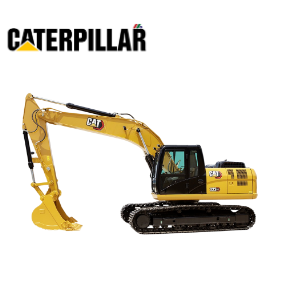

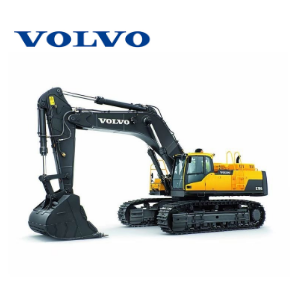
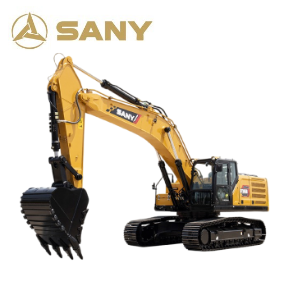
.png)

